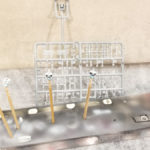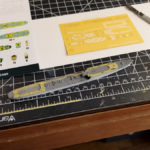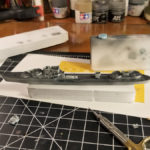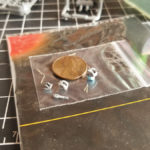I assembled the forward bridge as the first major bit of construction. Lots of paint touch-up, using Lifecolor paint, which of course is a slightly different shade than the Tamiya mix I made for airbrushing. I went back over everything with light mists and dry-brushing of the Lifecolor to blend it all, resulting in a quite-nice weathered effect.
While the kit goes together very well, the size of the parts are a hindrance. Most of the small bits, such as cranes, depth charge mounts, bridge equipment, and nearly everything else, are smaller than the injection gates that attach them to the sprue. Removing and cleaning parts takes considerable time and concentration. Still, the end result looks decent.
I used an older Gold Medal Models 1/700 scale Cruiser and Destroyer photo etch set for the railings. Etched in stainless steel, it’s a real chore to cut. Fortunately I have a set of Xuron metal shears that make short work of it, as the X-Acto and scalpel blades weren’t cutting it. Literally.
Other third-party bits are leftover 1/350th scale ladders from a previous resin DD build, which I used to replace the oversized and short-shot lifeboat mounts. I also replaced the plastic mast with a Master Models turned brass mast and yard arm, soldered together.
At this point I need to do final small bits, such as anchors, boat booms, and figures. I can then gloss coat, apply washes and weathering, then figure out the sea base and rigging.
*I have to say “Electric Boogaloo” after every “part two”, as it drives my wife nuts.
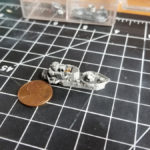
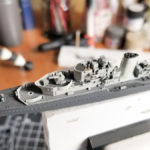
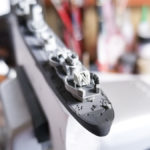
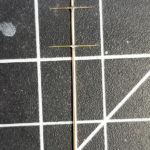
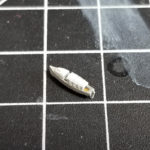
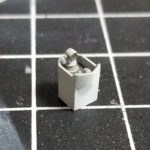
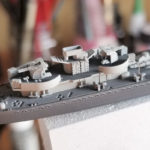
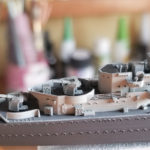
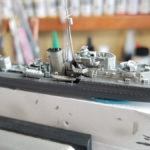
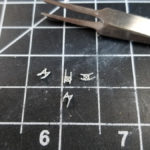
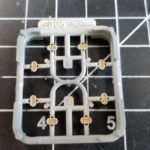
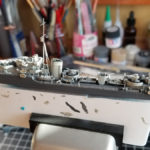
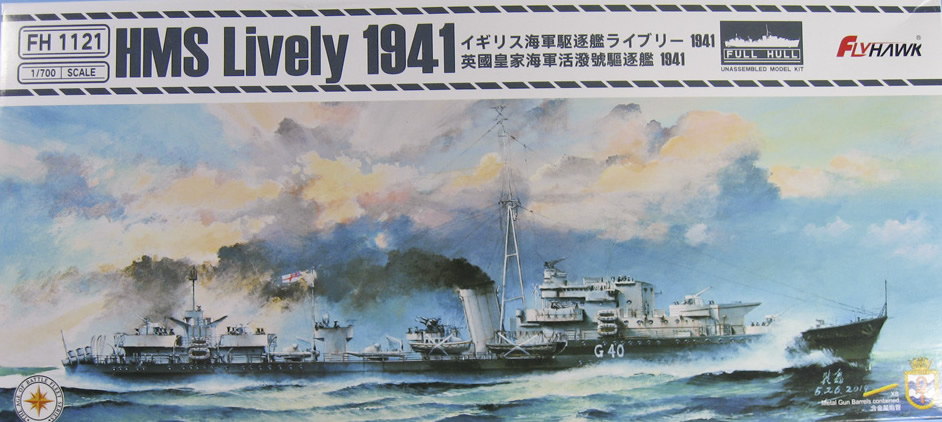 Decided to jump-in with a build of the
Decided to jump-in with a build of the 